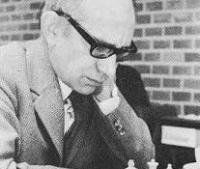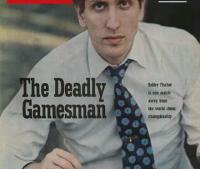
The Father of Modern Chess
Aaron Nimzowitsch (7 November 1886 – 16 March 1935), one of the most influential players and writers in chess history, was born in Riga, (the birthplace of two chess geniuses: Mihail Tal and Alexei Shirov!) Latvia, one of the Baltic states, along with Lithuania and Estonia a former Republic of the USSR.
It was his father who taught him the royal game at the age of eight, and Nimzowitsch played with passion and a certain success from his early childhood. In 1904 when he went to Berlin to study at University, he instead played chess incessantly! He participated in the Coburg Hauptturnier in 1904 which was the beginning of a long and glorious career as a professional chess player.
Aaron Nimzowitsch was the founder of Hypermodernism and along with other hypermodern thinkers such as Richard Reti revolutionized chess, proving to the chess world that controlling the center of the board mattered more than actually occupying it. He took from Tartakower, refined Tartakower’s ideas and was a strong influence on the hypermodern group of the 1920’s.
The peak of Nimzowitsch's career was in the late 1920s and early 1930s. Chessmetrics places him as the third best player in the world, behind Alexander Alekhine and Jose Capablanca from 1927 to 1931. I would add the great Emmanuel Lasker if he was playing during those years! His most notable successes were first-place finishes at Copenhagen 1923, Marienbad 1925, Dresden 1926, Hannover 1926, Carlsbad 1929 (ahead of Capablanca), and second place behind Alekhine at the San Remo 1930 chess tournament.
Nimzowitsch was also a highly-regarded chess writer; he explained his unique approach to chess in the timeless classic My System, to this day regarded as one of the most important chess books of all time! In My System, Nimzowitsch’s contribution to the theory of chess was enormous, becoming an invaluable manual for many generations of players up to today! It is said that Petrosian grew up with this book! Other works include Chess Praxis which further expounds the hypermodern idea, and the seminal work The Blockade, which explores the strategy implied by his famous maxim, "First restrain, then blockade, finally destroy!"
As a profound opening theoretician, Nimzovich has left a legacy of variations, many of which are still popular today. The Nimzo-Indian Defense (1.d4 Nf6 2.c4 e6 3.Nc3 Bb4) is named after him, as are several variations of the French Defense. He also is credited in part for the Sicilian, Nimzovich-Rubinstein (B29) Variation (1.e4 c5 2.Nf3 Nf6), the Nimzovich-Larsen Attack (1.b3), the Nimzovich Defense (1.e4 Nc6), and many others.
Today in my first issue about Nimzowitsch approach I want to share with you guys some Nimzowitsch tactical positions and I hope you enjoy it!



